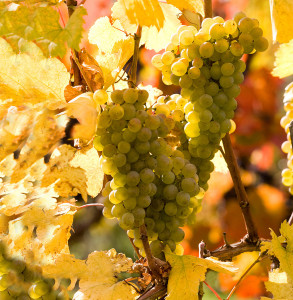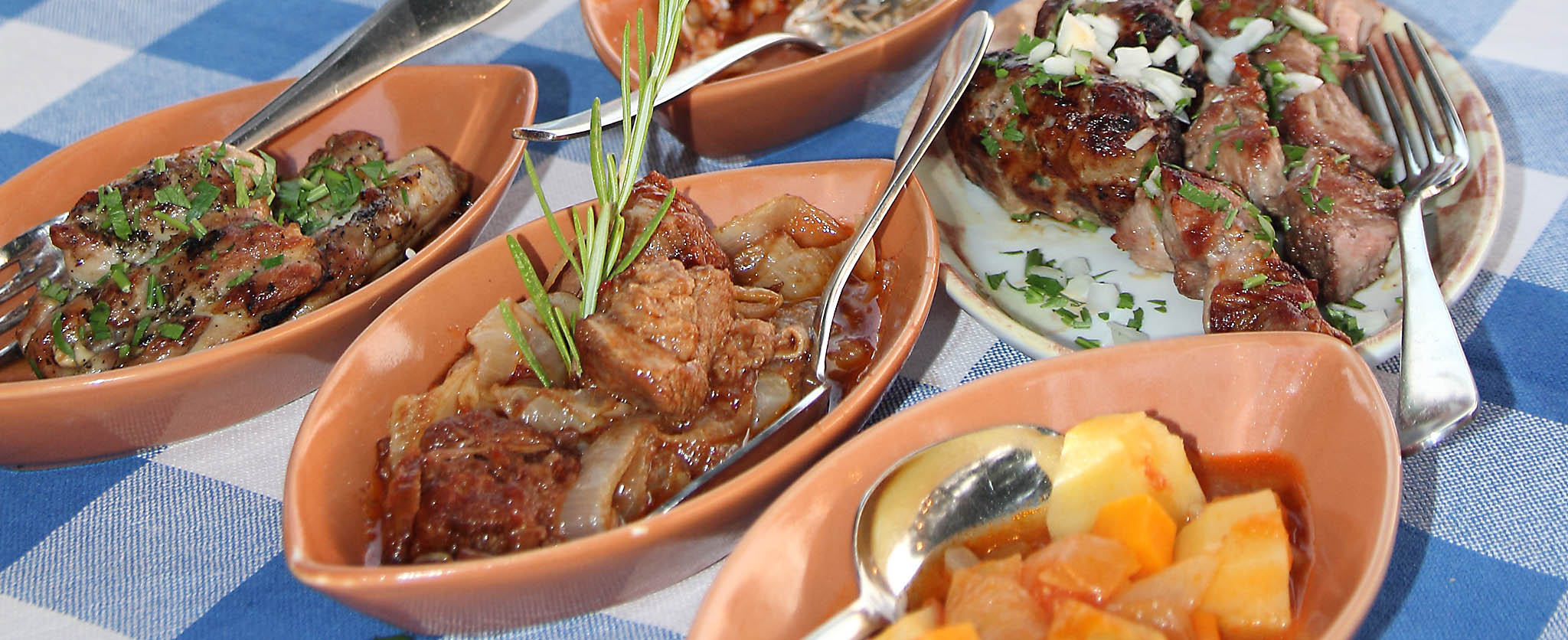The world of Cyprus wine is very diverse, and the history of the Cypriot wine goes back more than 5000 years. The following fact is also interesting : in contrast to the rest of Europe, where in the XIX century the phylloxera beetle, which was imported from the United States with the vines, almost destroyed the best vineyards, Cyprus managed to avoid this trouble, and now we can try virtually the same wine, which was famous throughout the Mediterranean in ancient times.
The history of winemaking in Cyprus
 It’s worth knowing that the vine is one of the few plants, the cultivation of which dates back to the ancient times, and its oldest specimens were discovered in Egypt, where grape seeds were found in one of the most ancient tombs and dated back to 4500 BC .
It’s worth knowing that the vine is one of the few plants, the cultivation of which dates back to the ancient times, and its oldest specimens were discovered in Egypt, where grape seeds were found in one of the most ancient tombs and dated back to 4500 BC .
In Cyprus, some evidence about the history of viticulture and winemaking date back to the first decades of Christianity, which is reflected in the local myths and legends. According to one of them, St. Lazarus, the resurrected by Christ saint, lived near the present Larnaca as a result of the persecution . One day, passing by vineyards, he asked the owner to try his grapes so he could quench his thirst, but he was refused. Lazarus pointed hostily at the basket, which was filled with grapes, but the owner said that the basket had salt in it. Angered at his lies and greed, the saint said that all the grapes on his vines would die, and the place with the beautiful vineyards would turn into a salt lake. And so it happened, and now regular visitors of this place are millions of birds, which arrive to the island each year for the winter.
Numerous researchers and explorers of past times mentioned Cyprus wine in their stories. Even in the Ottoman Empire, despite the Muslim faith, wine was highly appreciated. In more recent times (the middle of the XIX century), the French ambassador Fourcade reported to the government that more than 20% of the island was occupied by vineyards, with 2/3 of the data area being located in the district of Limassol, and the remaining third – in Paphos, Kyrenia, Famagusta and Larnaca.
 Richard the Lionheart can be identified among the admirers of Cypriot wines, as well as many representatives of numerous orders of knighthood, after their stay in Cyprus’ Commandaria regions. According to historical records, the first production of Commandaria began not far from Limassol, in Kolossi Castle, owned by the Templar Knights at the time. From here, one of the most famous dessert wines of Cyprus originates, the production of which has spread all over the island. The wine got its name after one of the wine regions of Cyprus.
Richard the Lionheart can be identified among the admirers of Cypriot wines, as well as many representatives of numerous orders of knighthood, after their stay in Cyprus’ Commandaria regions. According to historical records, the first production of Commandaria began not far from Limassol, in Kolossi Castle, owned by the Templar Knights at the time. From here, one of the most famous dessert wines of Cyprus originates, the production of which has spread all over the island. The wine got its name after one of the wine regions of Cyprus.
Centuries and rulers changed, with Cyprus being sold many times and re-given; at different times the island was owned by Lusignans, Venetians, Turks … At all times, the Cyprus winemakers had hard times. So, during the reign of the Turks (1868-1872) there was a tax on the production of wines and other alcoholic beverages, including zivania, that caused significant damage to winemaking. In those days the owners of wineries, seeing the tax collectors, poured the wine on the ground to avoid the tax burden, which could greatly exceed their sales revenue.
Even after the transition of Cyprus under the protectorate of the British Empire, the situation had improved slightly. The new owners did not hurry to invest in the economy and the development of winemaking in Cyprus. The heyday of Cypriot wine started only 20 years within the twentieth century, after the First World War. The British Empire reigned in the Middle East and Cyprus wines were supplied to all neighboring countries (Sudan, Egypt, Palestine, Lebanon, Syria), and even to the Persian Gulf countries. At the same time, the largest-and currently the Cyprus wine company KEO-was founded, which is famous for suppling local sherry to foreign markets.
Cyprus vineyards and wineries
Cyprus is an ideal place for growing vines because of the dry and warm climate. Numerous vineyards are scattered across the island, but most of them are in two mountainous areas – Pentadaktylos and Troodos. By the way, on such a small island as Cyprus is, the highest production volume of grapes in the world per capita and per unit area has been registered! Interesting, right?
Another interesting fact is that the Cypriot vineyards occupy a percentage of the largest portion of the rolling hills and mountains, on the ground which other crops can not grow. But the vine can grow and bear fruit at an altitude of 1500 meters above sea level.
Local vines grow from old roots for the past 100-150 years. Most of the local vineyards are very old. From the local red grapes the variety Mavro may be noted , which grows only in Cyprus and is included in most of the local blend of red wines, as well as more savory varieties such as Maratheftiko and Ophthalmo which has a higher acidity.They are included in almost all wines at the known wineries to improve blending and give the wine a more interesting taste. One of the most famous local white grape variety is Xynisteri – light and pleasant in taste, used in the manufacture of the majority of Cypriot white table wines.
In addition to the local, quite a lot of vines from Europe and America were brought to Cyprus, whose root was well taken in by the fertile land of Cyprus. These are well-known grape varieties like Cabernet Sauvignon and Chardonnay, Semillon and Grenache, Shiraz and others which, for many years side by side with local varieties, are used for the production of both blended and varietal Cypriot wines- usually in the form of small parties. In Cyprus, grapes grow on the mountains, which often led to the fact that the largest wineries (ETKO, KEO, LOEL and SODAP), located in the cities , received grapes, when they were delivered, not in the best condition.
 However, in recent years, attempts have been made to improve the process of supply, as well as the major manufacturers began to place some production facilities in the vicinity of the vineyards. In particular, the company-winery Laona in Arsos village was bought out by KEO. However, the smaller regional wineries that specialize in the production of the original varietal and blended wines are more interesting for the connoisseurs of good wine.
However, in recent years, attempts have been made to improve the process of supply, as well as the major manufacturers began to place some production facilities in the vicinity of the vineyards. In particular, the company-winery Laona in Arsos village was bought out by KEO. However, the smaller regional wineries that specialize in the production of the original varietal and blended wines are more interesting for the connoisseurs of good wine.
These wineries now in Cyprus, are about 20, and each of them produces between 10 to 100 thousand bottles of wine annually. It is a relatively small amount by the European standards, but the Limited Edition gives unique products even more value. Every year, thousands of tourists come to the island from all over the world and seek to take with them not only thrills and good memories, but also a piece of the island within a nice bottle of Cyprus wine.
A taste of Cyprus … – it will warm you once away from the island, when you are located in one of the Nordic countries,in a cozy living room, having opened a bottle of fine Commandaria, filled the glass (three pieces of pure clear ice are required ) and remembering great days spent on this small but elegant Mediterranean island. Currently,a few Cypriot wines are also available in many countries and have already won prestigious awards at international competitions.





















Wine in Greece, and on Cyprus in particular is something unbelievable! I visited Larnaca 2 years ago with my girlfriend and she was amazed with the taste of red semi sweet wine in one of the wine bars. Me either. It was like an explosion of taste in the mouth with long and sweet afterglow. Than we had a trip to France (1 year ago) but the wine, on our mind, was not so good, as in Larnaca. So, we are going to visit Cyprus again, maybe Paphos or Limassol, and compare wine with Larnaca’s one. 🙂